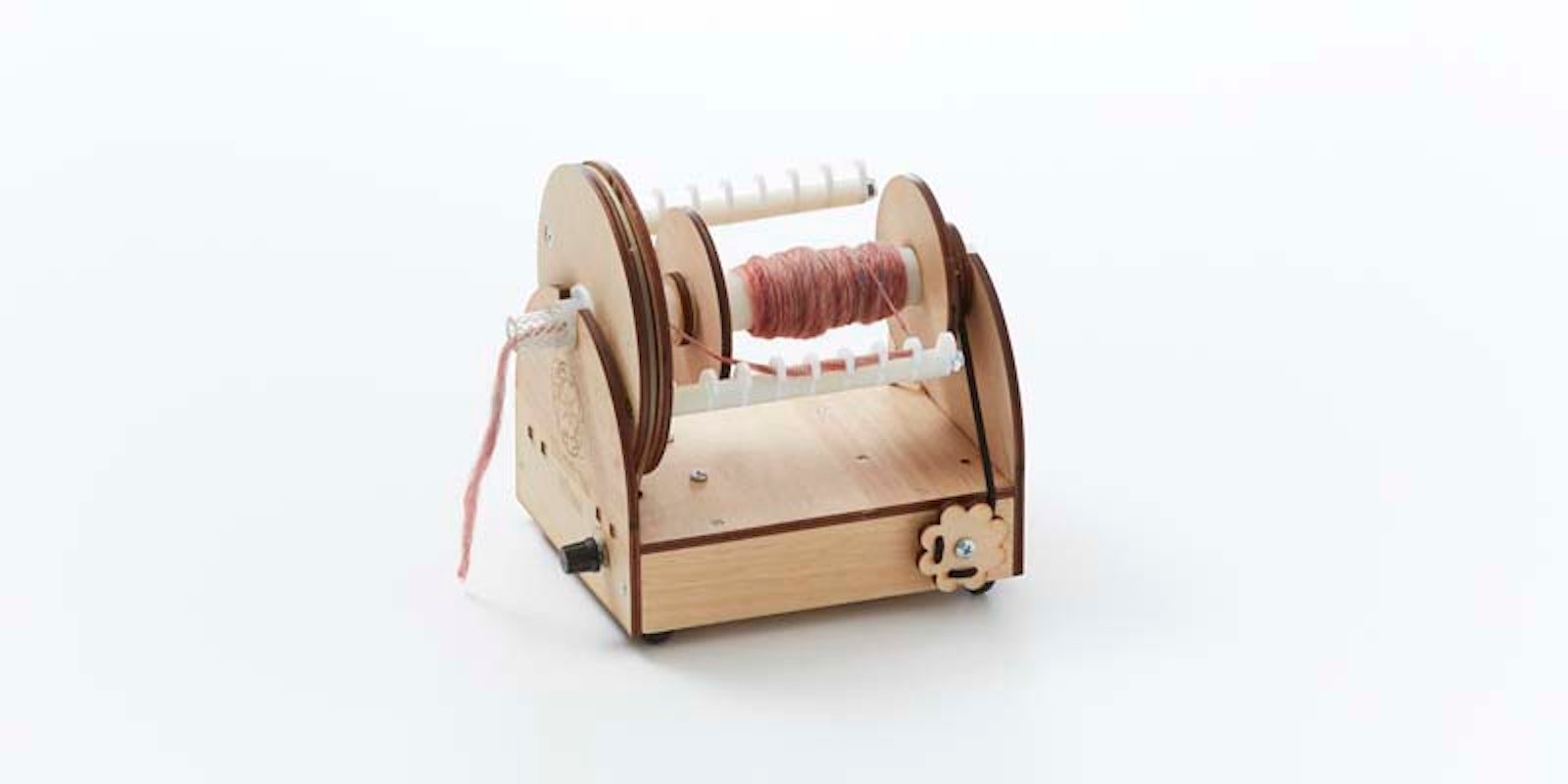Going from the drop spindle to an electric spinning wheel is like jumping from an ancient era into a modern one. The spindle is a primitive tool that requires patience and dedication; the e-spinner is a device designed for efficiency and, perhaps, instant gratification. As a typical millennial, I love that!
With a borrowed e-spinner at my side, I settled in to watch an Interweave.com video download named Power Spinning: The Modern Spinner's Guide to Electric Spinning Wheels with Sarah Anderson. I learned about the ins and outs of an e-spinner. The video addressed a thought that had been bothering me: Is this cheating? Although some might say yes, Anderson wisely points out that the skill of hand spinning is in the hands. The wheel, spindle, or e-spinner is just a tool, but the talent lies within the operator. See “Fun with an Electric Spinning Wheel” from Sarah Anderson to read more about the e-spinner as a tool.
Although I proclaim great admiration for the e-spinner now, it certainly wasn’t like that at first. Because the take-up onto the bobbin felt effortless, I didn't allow enough time for adequate twist buildup, so the yarn broke from the leader before I had a solid strand. After practicing for a while on spindles, I remembered how drafting fiber to feed onto a bobbin is a different process. After many failed attempts to get started, I finally became comfortable controlling the take-up, and the electric spinning wheel became a good friend.
Although much of my yarn was more consistent, it is easy to see here where I didn’t allow enough twist to build up in some sections.
Spinning on a drop spindle was fun because, as a new spinner, I felt that it allowed me to focus more on drafting when I wasn’t treadling, which was even truer with the e-spinner. Treadling, spindle momentum, and switching directions are non-issues! Likewise, I value the electric spinner because right now, I'd like to focus primarily on improving my drafting skills. You might be surprised—spinners from varying skill levels enjoy using an e-spinner, too. Check out “A Traditional Spinner Goes Electric” to hear it from a spinner with decades of experience who discovered her appreciation for the electric spinner. After drafting and allowing for the right amount of twist build up, the e-spinner takes it from there—quickly (which is something I appreciate, of course) and competently. Although I still have a lot of room for improvement, I think I have achieved my most balanced yarn yet with the e-spinner.
This post concludes my spinning lessons, but stay tuned next week for a recap of everything I’ve learned, what I loved and did not enjoy, and where my spinning will go from here.
—Jenna
View all of my spinning lessons!
Tales of a Beginning Spinner: Lesson One Tales of a Beginning Spinner: Change Your Whorl, Change Your Yarn Tales of a Beginning Spinner: Learning to Ply Tales of a Beginning Spinner: Drop (Spindle) Like It’s Hot


